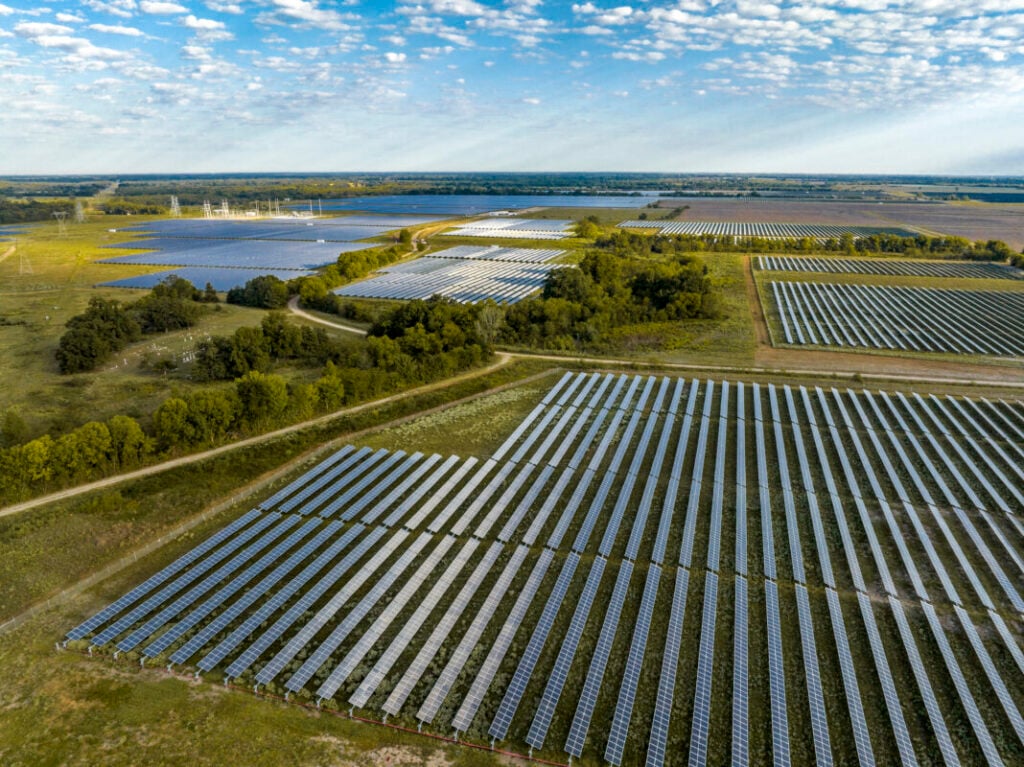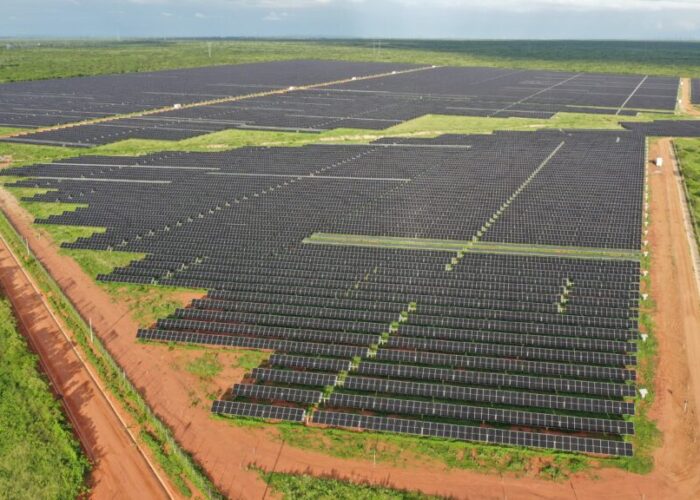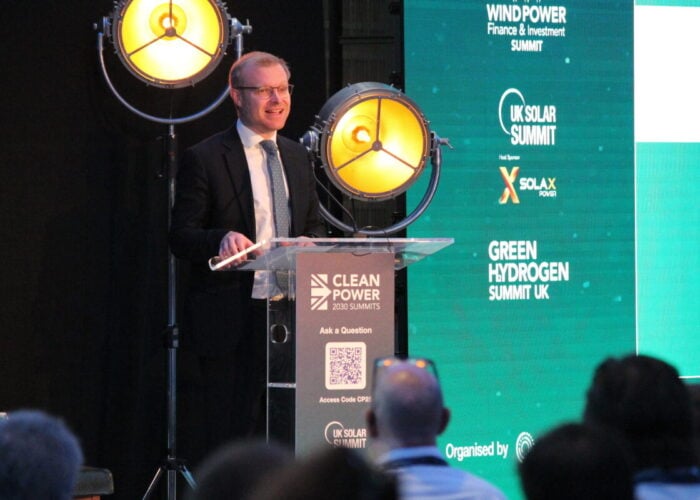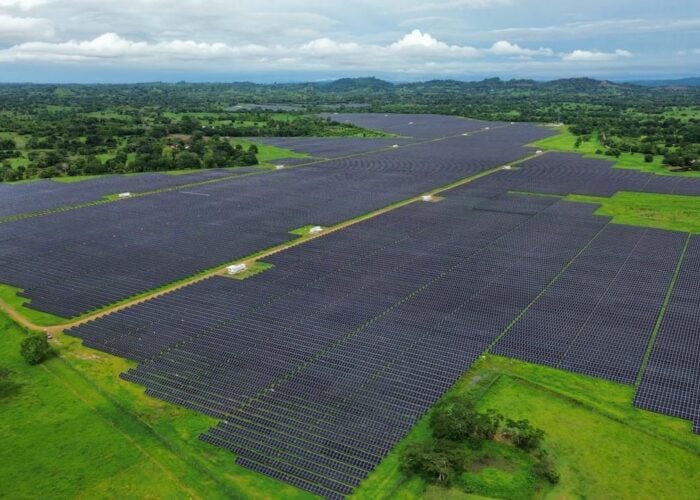
The US added a record 49GW of new solar capacity in 2024, as renewable power contributed to more than 1,000TWh of the country’s total electricity generation for the first time in a calendar year.
This is one of the main takeaways from the ‘Sustainable Energy in America 2025 Factbook’, the latest annual publication from the Business Council for Sustainable Energy (BCSE) and analyst Bloomberg New Energy Finance (BNEF). The record solar installation figures helped drive more than 50GW of total renewable energy capacity additions in 2024, with the wind sector adding an additional 5GW of new capacity.
Unlock unlimited access for 12 whole months of distinctive global analysis
Photovoltaics International is now included.
- Regular insight and analysis of the industry’s biggest developments
- In-depth interviews with the industry’s leading figures
- Unlimited digital access to the PV Tech Power journal catalogue
- Unlimited digital access to the Photovoltaics International journal catalogue
- Access to more than 1,000 technical papers
- Discounts on Solar Media’s portfolio of events, in-person and virtual
“We are on the cusp of an American energy expansion,” said BCSE president Lisa Jacobson. “Renewable energy and natural gas are the growth sectors of the energy industry, and, when paired with energy efficiency technologies, will be fundamental in meeting demand growth.”
However, the fact that around ten times more solar was added in 2024 than wind highlights how solar has come to dominate the US renewable power space, as shown in the chart above. Last year marked the ninth consecutive year that the US added more new solar capacity than wind, and the third consecutive year that both new solar additions rose year-on-year, while new wind additions fell year-on-year.
The report notes that 2024 saw record additions of new solar capacity, which helped renewable power account for 24% of all US power generation, and what it calls “zero-carbon power”, defined as renewable energy plus nuclear power, to a record high of 42% of US electricity generation.
The business case for solar
This strong investment appetite for renewable power in general, and solar power in particular, stems from the fact that, compared to fossil fuel sources, clean power projects are often the smartest investment. Both fixed-tilt and tracking PV systems saw among the lowest levelised cost of electricity (LCOE) figures in 2024, with the cost of generating electricity from the latter as low as US$45/MWh.
This compares favourably to other forms of renewable power generation – onshore wind recorded a low LCOE of US$40/MWh – and very positively to fossil fuel sources, with coal paired with carbon capture and storage (CCS) systems reporting an LCOE between US$122-288/MWh. While fixed-tilt PV-plus-storage was shown to have a higher LCOE than onshore wind-plus-storage, co-located solar and storage projects had a slightly lower range of LCOE than standalone storage projects that included 4-hour batteries: US$87-168/MWh compared to US$135-189/MWh. These trends are shown in the graph below.
The strength of the investment case for solar is reflected by improvements in BCSE and BNEF’s ‘energy productivity’ figure, the ratio of US GDP to total electricity consumption in the country, which is meant to reflect how efficiently the US is expanding its power generation capacity to meet growing demand, amid broader economic changes.
The report notes that the US economy grew by 2.8% in 2023, while primary energy consumption increased by just 0.5%, giving a record energy productivity figure of 2.3%, reflecting “the highest economic output achieved per unit of energy consumed to date”.
“Energy efficiency is driving economic growth and job creation,” said Paul R Glover, president of the Alliance to Save Energy in response to the report’s publication. “Over the past decade, a 29.1% increase in energy productivity sets the foundation for a stronger, more resilient grid. And with over 2 million Americans employed in energy efficiency jobs across the US, investing in efficiency isn’t just smart policy – it’s an engine for economic opportunity.”
Solar-plus-storage grows in the US as it does in Europe
The report’s conclusion echoes the growing sentiment about the financial viability of solar-plus-storage in the renewable energy investment space. At the beginning of February, speakers at Solar Media’s Solar Finance & Investment Europe event described storage as a key component to strengthen revenue in European solar, and just last week, attendees at the Energy Storage Summit described such co-located projects as among the “most cost-competitive” on the continent.
The report notes that the US commissioned 11.9GW of new storage capacity last year, a 55% increase from the previous year, the fifth consecutive year of record-breaking additions. The majority of this capacity was added in California and Texas, with these states, along with others in the south-west, accounting for 84% of the new capacity added in 2024. The largest of these additions was the Gemini solar-plus-storage project in Nevada, which reached commercial operation in July.
Trends in storage investment also reflect trends in clean energy investment, with the report noting that the US invested the fourth-most into storage in 2023, with China in first place. These figures are similar to total clean energy investment, with China leading the world with 4.4% of total GDP going towards the energy transition in 2024, ahead of the US, which committed 1.3% of total GDP.
Supportive legislation played a key role
The report also suggests that supportive legislation has helped drive these trends, and none have been more impactful than the Inflation Reduction Act (IRA). US president Biden’s landmark US$500 billion investment package has helped drive a new wave of federal support for the energy transition, with US government funding alone reaching US$99 billion between 2021 and 2024, with over one-third of this funding going towards batteries and electric vehicles.
Figures from the Solar Energy Industry Association (SEIA) also suggest that the favourable economic conditions created by the IRA – most notably tax credits offered to companies that invest in renewable power deployments and manufacturing – encouraged the investment of over US$100 billion in private capital within the first 12 months of the bill’s lifetime. According to the BCSE and BNEF, the US spent US$338 billion on the energy transition, as a whole, in 2024, up from US$303 billion in 2024.
Since the passage of the IRA in mid-2022, the US’ annual renewable electricity generation has passed the 1,000TWh barrier, as shown in the graph below. This is a significantly greater growth than in the nuclear sector, and compares favourably to the coal sector, which has seen a decline in generation, suggesting that supportive legislation has helped renewable projects grow to account for a greater percentage of the country’s energy mix.
However, these same figures demonstrate that natural gas remains a key part of the US’ energy mix. The BCSE and BNEF report also notes that 2024 saw a record year for natural gas demand in the US – growing 1.3% year-on-year to reach 99.7 billion cubic feet per day – suggesting that the US is still a way off from replacing its reliance on fossil fuels entirely with renewable power.
Still, while the report notes that “the elections last November marked a shift in federal policy priorities”, the industry has expressed confidence that, crucially, the IRA is unlikely to be completely repealed.
Grids and supply chains remain obstacles
The report also highlights that the US’ continued reliance on natural gas is not the only obstacle to its clean energy goals. Indeed, US carbon dioxide emissions were 0.5% higher in 2024 than in 2023.
Regarding the clean energy sector in particular, the report notes that a lack of available grid capacity is a key challenge for the US, a long-standing issue for the energy sector as a whole. Last month, four-fifths of energy projects withdrew from “inefficient” US grid queues, as demand for and investment in renewable power generation has considerably outpaced grid investments.
The trend is reflected in the BCSE and BNEF’s latest figures, which show that, in 2024 alone, 317GW of new capacity applied for interconnections to the US grid, nearly one-third of the current operating electricity generation capacity in the US. The report also shows that over two-thirds of this capacity is for solar and storage projects, highlighting the importance of alleviating grid queues if either technology is to reach its potential in the US energy system.
There are also international concerns, with the threat of reliance on overseas products, particularly solar cells produced in China and Southeast Asia, creating an unstable environment for US module manufacturers and installers. The report notes that US solar cell imports grew to US$1.5 billion in the first ten months of 2024, a 154% increase compared to the same period of 2023. The same trend is present, to a lesser extent, in the module sector, where the US imported over 51GW of modules in the first ten months of 2024, 12.3% more than the same period of 2023.
This imbalance is particularly concerning for the US considering the government’s recent imposition of new trade tariffs, making good on US president Trump’s protectionist trade rhetoric. This month, the president has raised tariff duties on Chinese solar products to 60% and introduced a 25% tariff on steel and aluminium imports to the US, key materials in the construction of solar modules.







